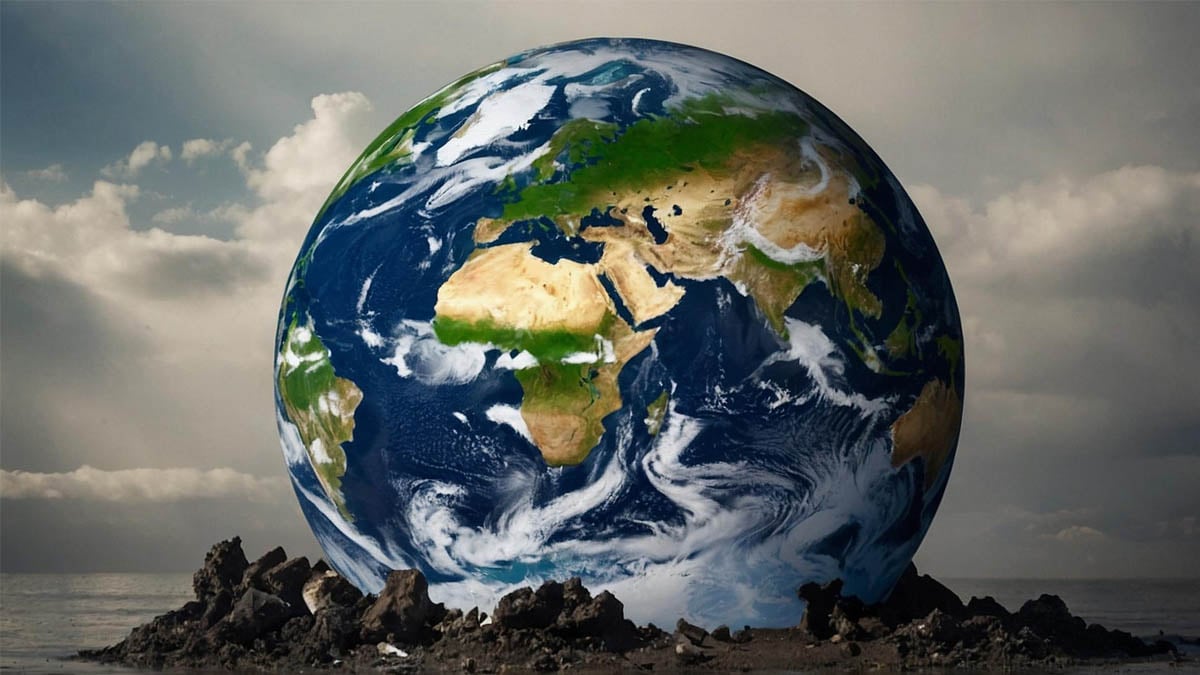The oceans are heating up at a terrifying pace, and the consequences could reshape life on Earth as we know it. In 2023, the world witnessed a series of unprecedented marine heat waves that stretched across the globe, lasting longer and spreading wider than ever before. These extreme events are more than just numbers—they’re a stark warning about how fragile our planet’s climate system has become.
Understanding marine heat waves and their consequences
Marine heat waves are extended periods when ocean temperatures rise well above normal levels. While they have occurred in localized areas before, 2023 saw these heat waves spreading across nearly all of the world’s oceans. According to a study published in Science journal, these events lasted four times longer than the historical average, reaching durations of over 500 days in some regions.
The impact on marine life has been devastating. High temperatures trigger widespread coral bleaching, weakening and eventually destroying reefs that serve as vital habitats for countless marine species. Fish populations are also highly sensitive to temperature shifts, disrupting entire food chains. In addition, warmer waters hold less oxygen, further stressing marine ecosystems and putting ocean biodiversity at risk.
The global scale of 2023’s record-breaking heat waves
The 2023 marine heat waves broke records in both intensity and reach. Studies revealed that 96 percent of the world’s oceans experienced abnormal temperature spikes, marking the largest global event ever recorded. The Atlantic North, Tropical Pacific, North Pacific, and South-West Pacific were especially hard hit, accounting for over 90 percent of all heat anomalies.
Some regions endured prolonged periods of extreme heat. For instance, the Atlantic North saw temperatures remain unusually high for an astonishing 525 days. This is not just a rare occurrence—it’s a clear signal that the global climate system is undergoing significant changes.
The Pacific Eastern Tropics experienced temperature rises of up to 1.63°C, coinciding with the early stages of El Niño. Scientists warn that as the planet continues to warm, these extreme marine heat events may become increasingly frequent, posing long-term threats to ocean ecosystems and human livelihoods alike.
The underlying causes of marine heat waves
Several factors contributed to the extreme heat waves of 2023. Regional drivers included increased solar radiation due to reduced cloud cover, shifts in ocean circulation, and variations in wind patterns. These interactions allowed the oceans to absorb more heat, amplifying the intensity and duration of the heat waves. In places like the Atlantic North and Pacific, altered currents trapped heat in surface layers, prolonging extreme temperatures.
However, natural factors alone cannot explain the unprecedented scope of these events. Human-driven climate change has played a major role. Rising global temperatures, fueled by greenhouse gas emissions, have elevated baseline ocean temperatures, making waters more vulnerable to extreme warming. Feedback loops between the atmosphere and oceans, such as reduced mixing and increased stratification, trap heat in surface waters, further intensifying marine heat waves.
Impacts on marine ecosystems and human communities
The consequences for marine life are profound. Coral reefs, often called the “rainforests of the sea,” face the most dramatic impacts. When water temperatures rise too high, corals expel the symbiotic algae living in their tissues, leading to coral bleaching. Without these algae, corals lose both their color and primary food source, and prolonged heat can lead to large-scale reef die-offs.
Fish populations are equally affected. Extended heat waves disrupt reproduction cycles, migration patterns, and feeding behavior, threatening the world’s fisheries and the communities that depend on them. Economists estimate that prolonged marine heat waves could cost billions of dollars globally in lost revenue from disrupted fisheries.
On a personal note, I remember visiting a coastal town last summer where local fishers told me that catch sizes had dropped dramatically compared to just five years ago. The frustration and uncertainty in their eyes made it clear that marine heat waves aren’t just environmental—they’re deeply human issues too. Communities that rely on the oceans for food and income are on the frontlines of these changes.
These events also serve as a wake-up call. The oceans absorb more than 90 percent of the excess heat trapped by greenhouse gases, making them critical regulators of the climate. But as marine heat waves become more frequent and severe, the balance of the ocean ecosystem is at stake, with cascading effects on the entire planet.
As we witness these extraordinary events, one question looms : what other signs are hidden beneath the ocean’s surface, waiting to reveal how rapidly our planet is changing ? Understanding the interplay of natural and human-driven forces is key to preparing for what comes next.
If this story makes you pause, share your thoughts on how we can protect marine life and support communities affected by these heat waves. Have you seen the effects of warming oceans firsthand ? Drop your experiences in the comments and spread awareness by sharing this article with friends and family. The oceans are telling a story—are we ready to listen ?
